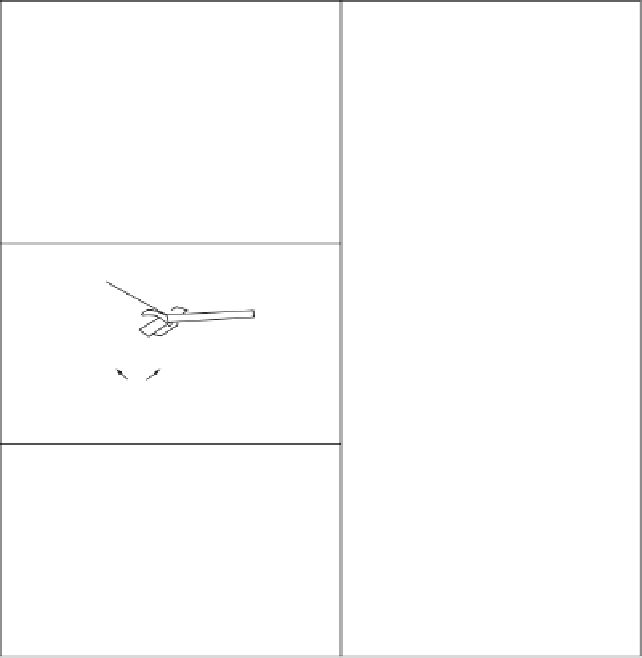Environmental Engineering Reference
In-Depth Information
are used for soft surficial soil samples. A tube sampler can be used at depths of 1-
10 ft soft soil samples. By inserting an acetate sleeve, a tube sampler can also
preserve soil core. Auger samplers (bucket auger and hand auger) can be used to
take deeper soils (3 inches - 10 ft) but will disrupt and mix soil horizons, making the
precise horizon interface difficult to determine. The split-spoon sampler has
excellent depth range and is useful for hard soils. It may be used in conjunction with
drilling rigs for obtaining deep core soil profiles.
Sediment Sampling
Scoops and trowels, which are used in soil sampling, can be used for surface
sediments around shoreline for shallow and slow-moving waters. Most sediment
samples, however, are collected using either one of the devices shown in Figure 4.6.
The Ekman dredge is a small and lightweight (10 lbs) device to collect bottom
materials that are usually soft. If the sediment is compacted, or if much gravel, rocks,
vegetation-covered bottom or large debris cover the bottom, then heavier Petersen or
(d)
(a)
rope
Trigger
mechanism
Trigger
mechanism
jaw
Ekman grab
Valve
(b)
Catch application
Capallary weight
60M
Capallary weight
Petersen grab
Core barrel
(c)
Catch
application
Core tube
Weight
Jaw
Side
plate
Kajak-Brinktrurst corer
Ponar grab
Figure 4.6
Common sampling tools used for sediment: (a) Ekman dredge, (b) Petersen dredge,
(c) Ponar dredge, and (d) Sediment core sampler (U.S. Army Corps of Engineers, 2001)

















Search WWH ::

Custom Search